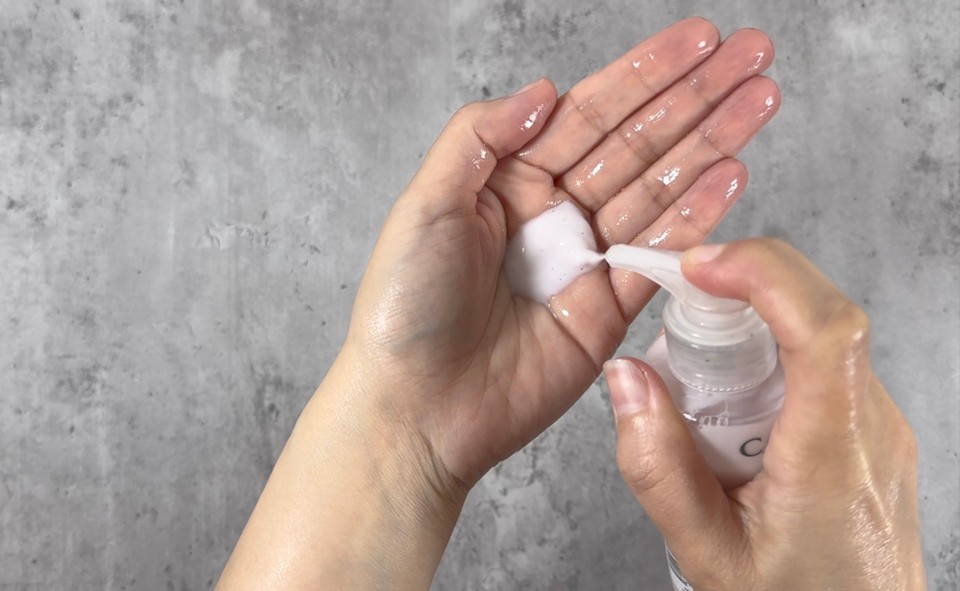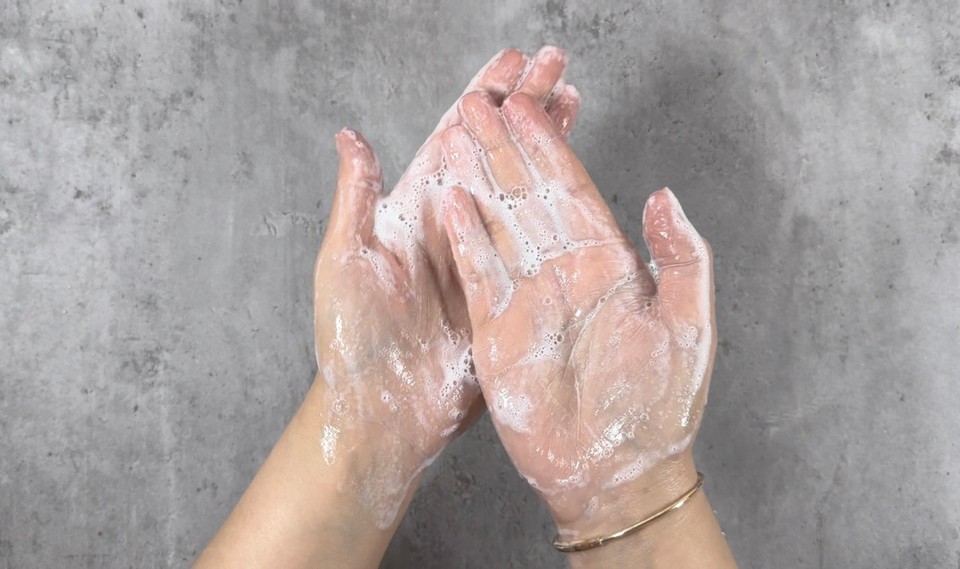Conditioning Shampoo 2 In 1
| Phase | Ingredient | Percent (%) | Weight (g) |
|---|---|---|---|
| Phase A | BTMS50 | 4 | 8 |
| Argan oil | 4 | 8 | |
| Myrica wax | 2 | 4 | |
| Phase B | Glycerin | 4 | 8 |
| Guar gum | 0.3 | 0.6 | |
| SCI | 15 | 30 | |
| Coco betaine | 10 | 20 | |
| Distilled water | 47 | 94 | |
| Phase C | Panthenol | 2 | 4 |
| Rosemary extract | 6 | 12 | |
| Tropaeolum majus extract | 4 | 8 | |
| Preservative (cosgard) | 0.7 | 1.4 | |
| Fragrance oil | 1 | 2 |
This recipe is for a creamy conditioning shampoo. This is great for someone with very dry hair or wanting to have 2 in 1 product.
In a previous post, I shared a recipe for clarifying shampoo. You can find this recipe here.
If you prefer solid versions for conditioning shampoo, please check this recipe for Solid Shampoo Bar for Dry Hair or Marble Shikakai Shampoo Bar.
This shampoo contains a conditioning agent, emollients and wax to add moisturizing properties.
In this recipe, we have 3 phases. Phase A is the oil phase. Phase B is the water phase, and phase C is the cool-down phase (all the heat-sensitive ingredients).
If you want to understand more about the basics of emulsion, please read this post.
In general, an emulsion combines oil and water, so we will need an ingredient that binds these two together. In cosmetics, we use an emulsifying wax to bind water-based and oil-based ingredients.

I use BTMS50 (Behentrimonium Methosulfate (and) Cetyl Alcohol (and) Butylene Glycol) as the emulsifying agent and a conditioning agent in this recipe. If you want to switch it with BTMS25, you can. If you can find neither, you can use an emulsifying wax with moisturizing properties, such as Olivem100 or Polawax.
For my liquid oil, I use Argan oil. Argan oil is rich in fatty acids, antioxidants, omega-3 fatty acids and vitamin E, which help nourish and moisturize the hair. If you want to swap the Argan oil, you can use jojoba oil, broccoli seed oil or castor oil.
I chose Myrica fruit wax, a plant-based wax that helps to add shine to the hair and helps to stabilize the emulsion. You can replace it with Rice bran wax, berry wax or beeswax. To learn more about waxes you can use in cosmetics, Please check this post here.
In the water phase, I use glycerin as a humectant and an agent to disperse the Guar gum. You can use Propanediol instead of glycerin.
For my primary surfactant, I chose SCI (Sodium cocoyl isethionate) and used the powdered version. If you can only obtain SCI noodles, I recommend grinding them into a powder so it will be easier to work with.
Since SCI is a fine powder, use a respiratory mask to avoid irritation.
If you can't find any powdered surfactant, you can use coco glucoside or decyl glucoside instead, considering that the texture and consistency will differ.
I use Coco Betaine as a secondary surfactant. Coco betaine is mild and has good foaming and cleaning properties. If you want another liquid surfactant, you can use Cocamidopropyl Betaine, Sodium cocoyl apple amino acids.
The final ingredient in the water-based phase is distilled water. You can replace the distilled water with a hydrosol or aloe vera liquid.
The last phase is phase C which contains the active ingredients, the preservative and the fragrance.
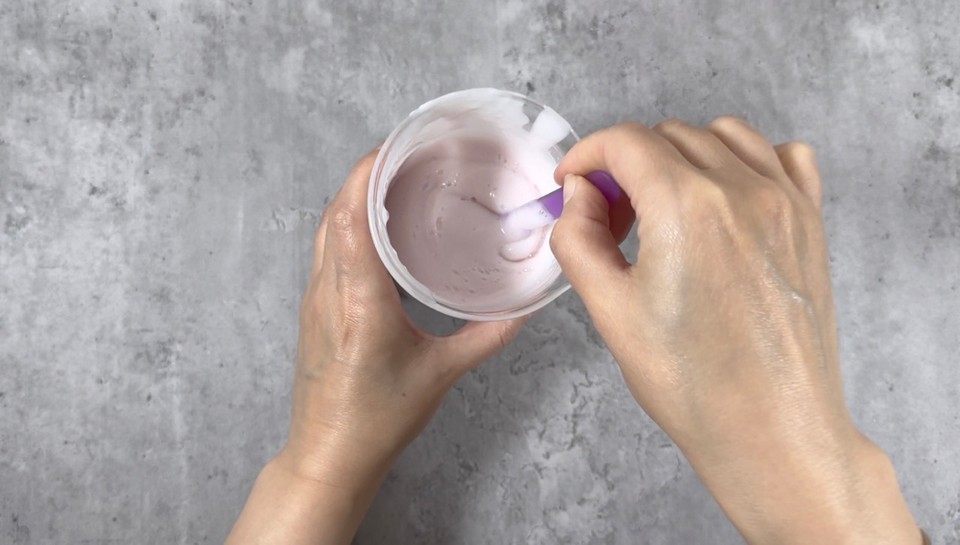
For my active ingredients, I use:1. Panthenol (aka Vitamin B5, a humectant that can strengthen hair strands, increases shine and smooths the hair). 2. Tropaeolum majus extract (helps strengthen the hair's keratin and prevent breakage). 3. Rosemary extract (known to help stimulate hair growth and has anti-inflammatory properties).
You can skip all the active ingredients and replace them with distilled water.
If you wish to replace these active ingredients with others. In that case, you can use the following: horsetail extract, Camomile extract, Aloe Vera extract, Nettle extract, Ginseng extract, Amaranthus Caudatus Seed Extract, Hydrolyzed Wheat Protein, Porphyra Umbilicalis Extract, Inulin, Betaine powder, Urtica Dioica Leaf extract, Hydrolyzed Keratin, Lepidium Meyenii Root Extract, or Trehalosa.
There are probably more options to choose from. Research and find the active ingredients that suit your hair type and needs. To read about hair types and needs, check this post here.
You can use your preferred cosmetic preservative. Always follow the supplier's instructions regarding usage rate and how to add the preservative.
If you need to change the usage rate, adjust the recipe accordingly (if you need to use a lower percentage of your chosen preservative, add the difference to the distilled water and vice versa).
If you want to use essential oil instead of fragrance oil - make sure to use skin-safe essential oils. Some essential oils can cause skin irritations, so research before adding them to the final product.
The last thing you will need is a PH adjuster, such as a lactic acid solution or citric acid solution (to lower the PH if necessary). You can read more about PH adjustments here.
Use the calculator to change the amount of product you wish to make.
I reused two old pump bottles, each of 100g. You can use any pump bottle you have or even a tube container (in this case, you will need a syringe to fill in the tube container).
When I reuse old bottles, I wash them with soap and water (I use my dish soap), and when they dry, I spray them with Isopropyl alcohol 70% and let them air dry before pouring in the product.
I do the same process with new containers I buy. Whenever I can reuse old bottles and containers, I reuse them. I reuse them for a couple of years until they get damaged and are no longer usable. The hardest part to clean is the thin tube that goes inside the bottle; for this part, I have a straw brush which can be placed inside the narrow tube and clean it. Please remember that I aim to show you products you can make for self-use. If you plan to sell cosmetics, you must follow the restrictions in your country/area.
You can't reuse old containers (for selling) without having an assessment from a formal Institut that can ensure the process is approved by the health department in your country/region.
Since my website objective is DIY cosmetics you can make for yourself, I don't write about the regulations you need to follow if you want to sell your products. For self-use, from my experience, it is enough to clean old containers with soap and water and spray them with Isopropyl alcohol 70% or more.

Lastly, you can add some color to the final product if you wish. This is optional. I used a pinch of pink mica to obtain a light pastel color. You can use other mica colors or skip it.
Method:
- In a heat resistance beaker, add phase A ingredients.
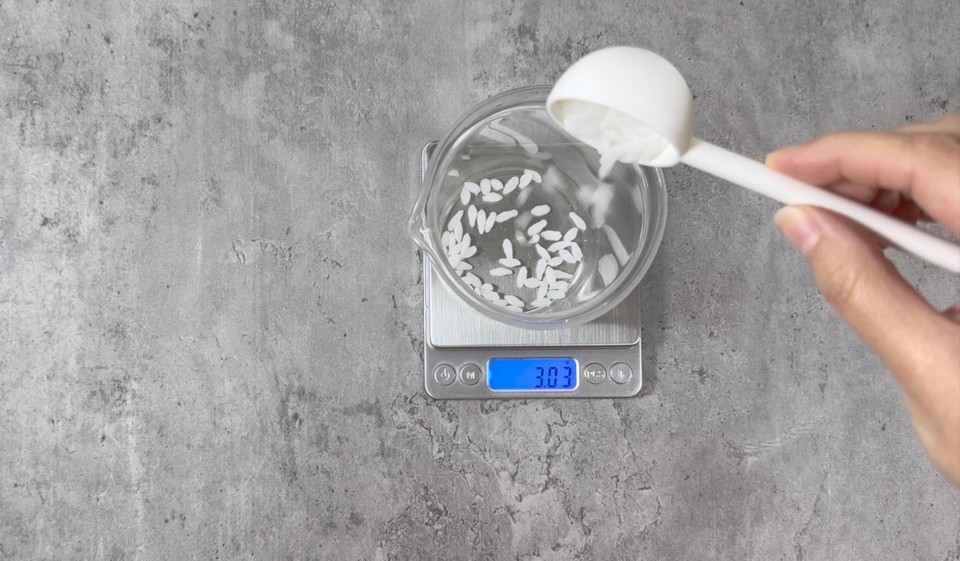
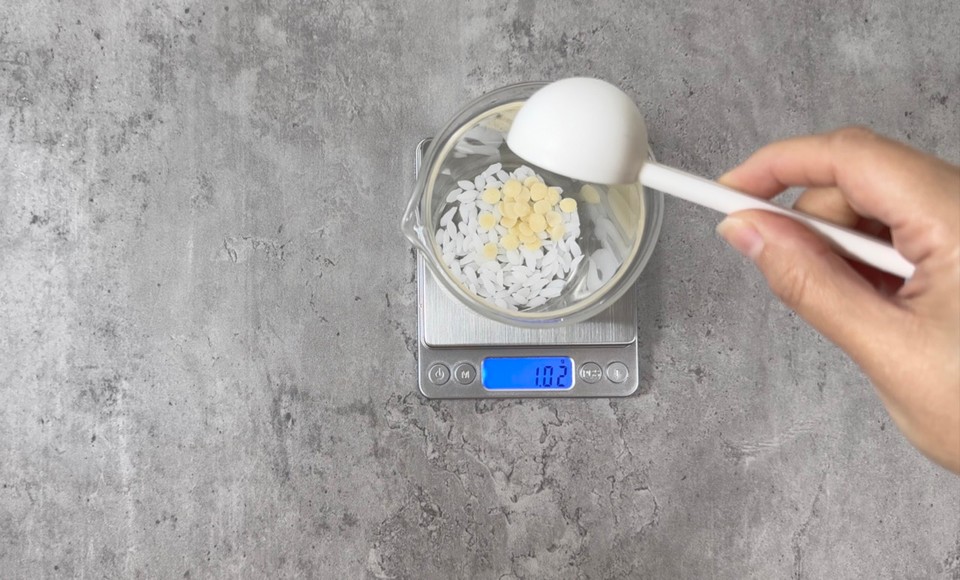

- In a separate heat-resistance beaker, add phase B ingredients. Start making a slurry by combining the Guar gum and glycerin, then add the surfactants and mix well.
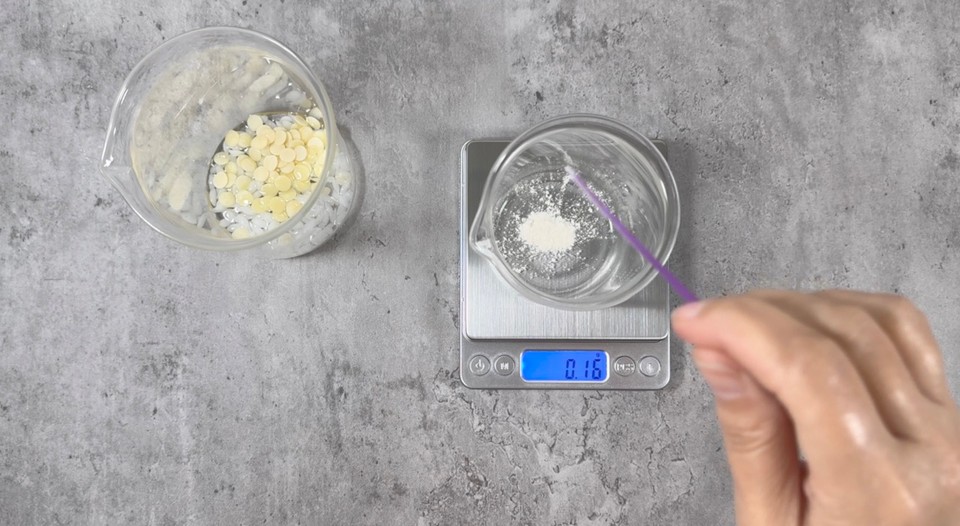
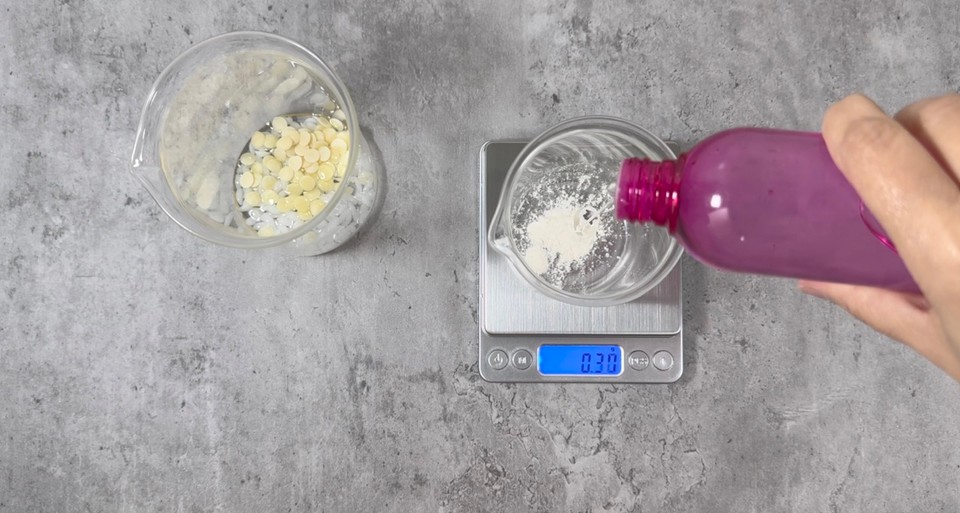
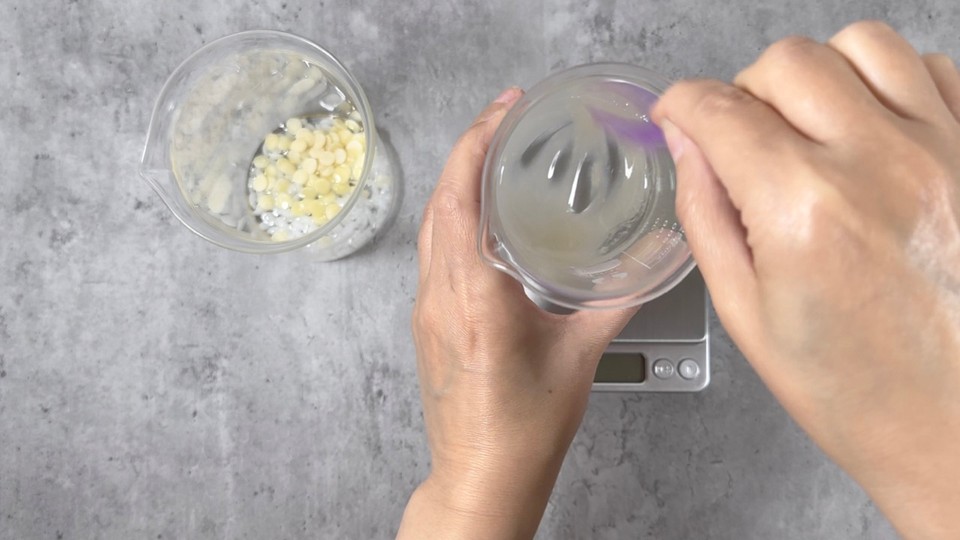
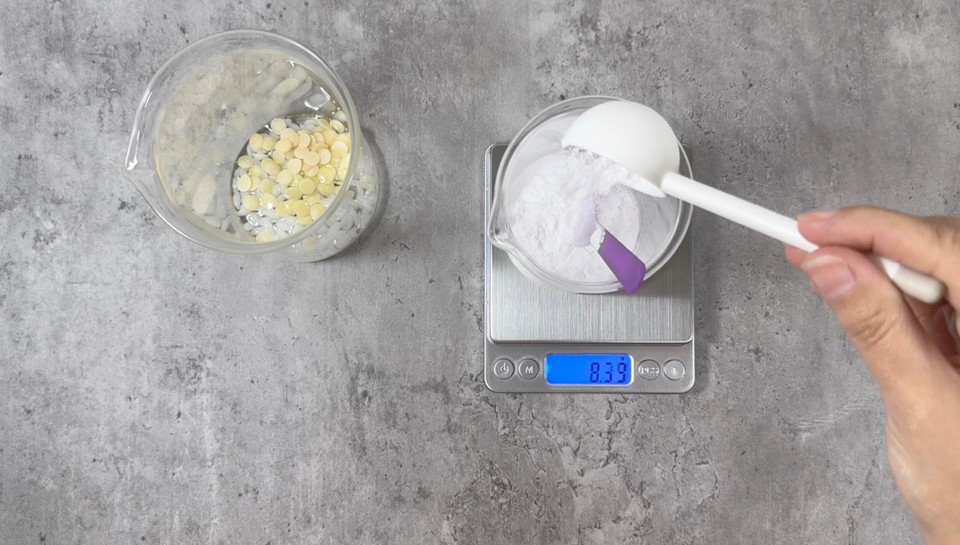
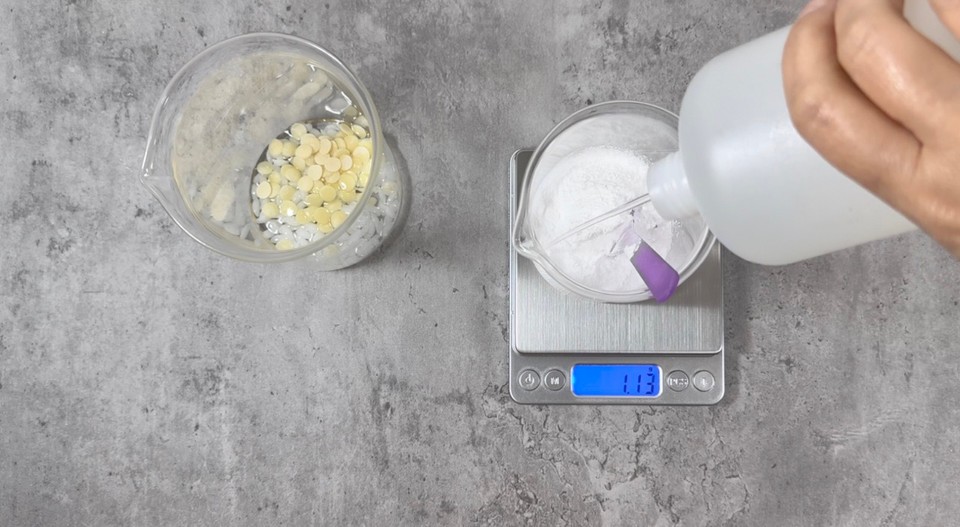
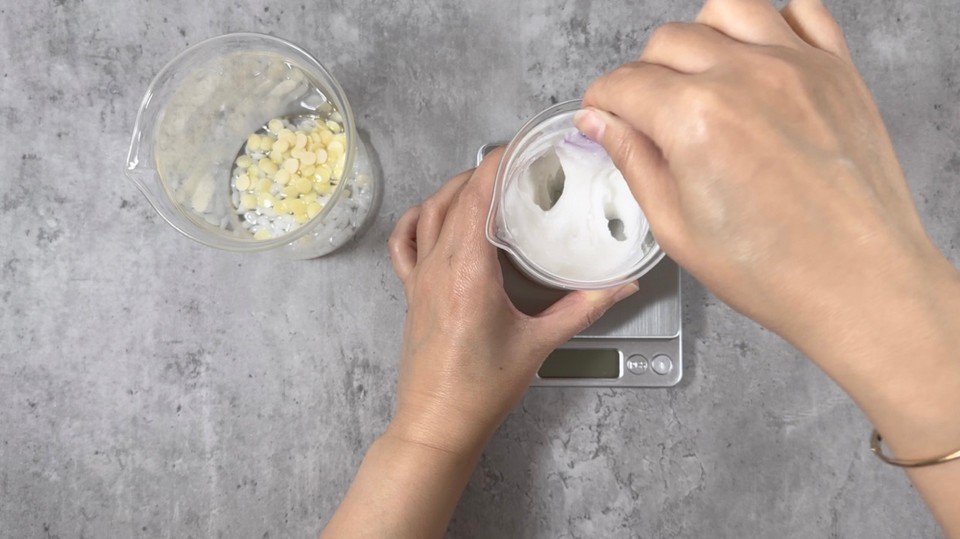
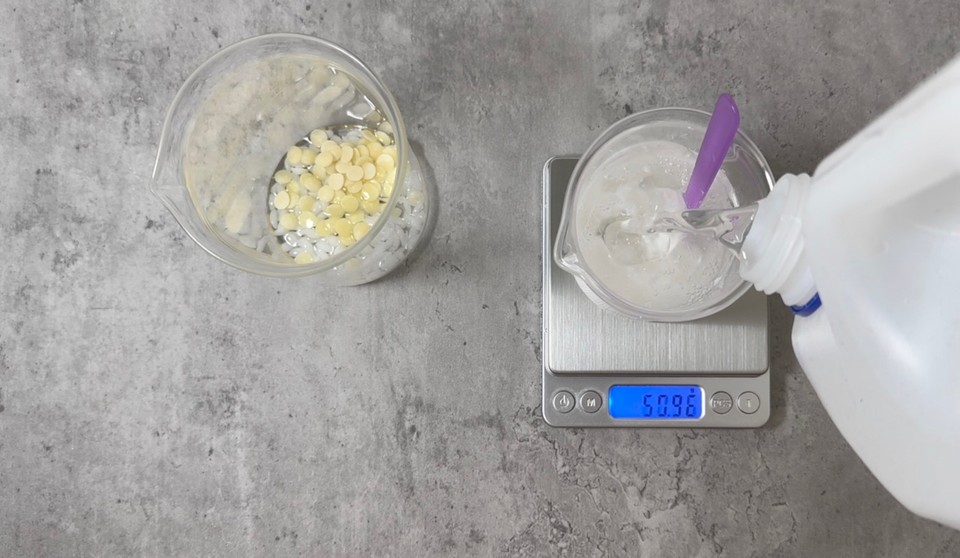
- Place phases A and B into a double boiler on medium heat to melt and dissolve all the ingredients. Cover phase B in aluminum foil to minimize water evaporation.
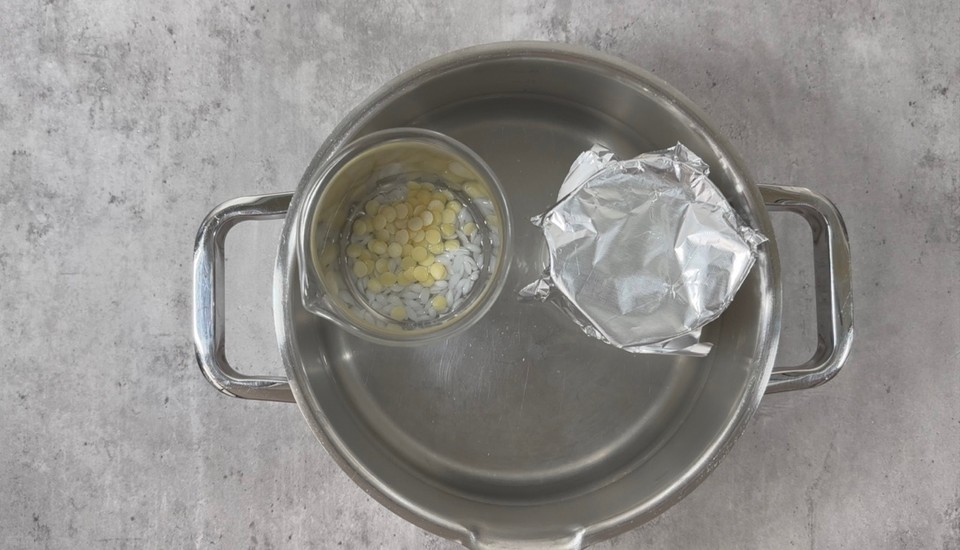
- While phases A and B are heating, prepare phase C. Add all the phase C ingredients and mix to dissolve the panthenol. Set aside.
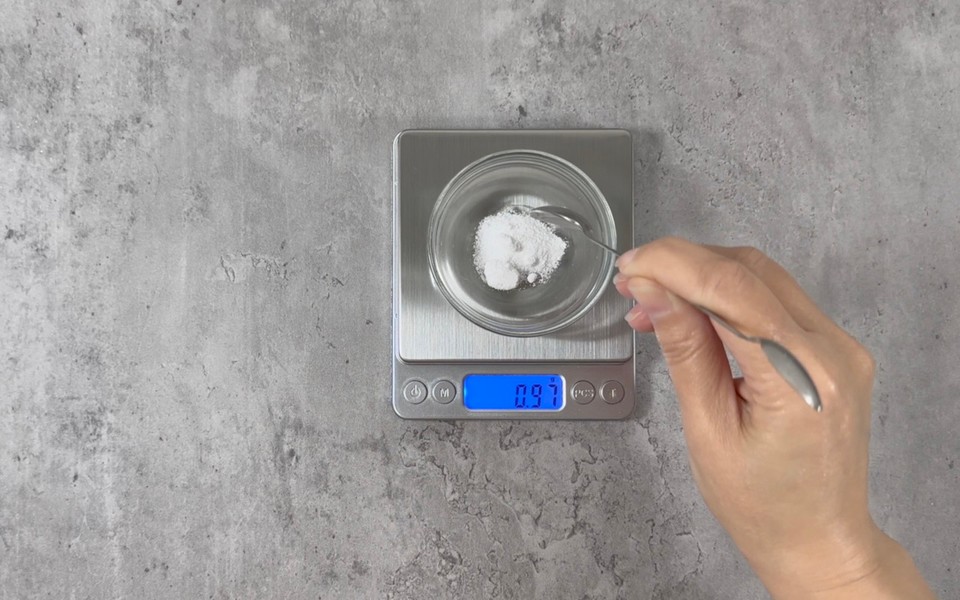
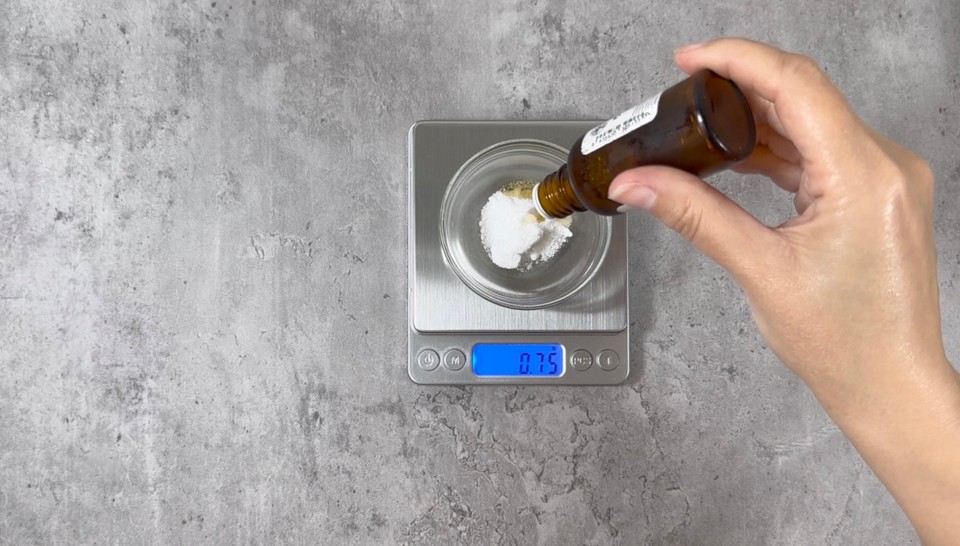
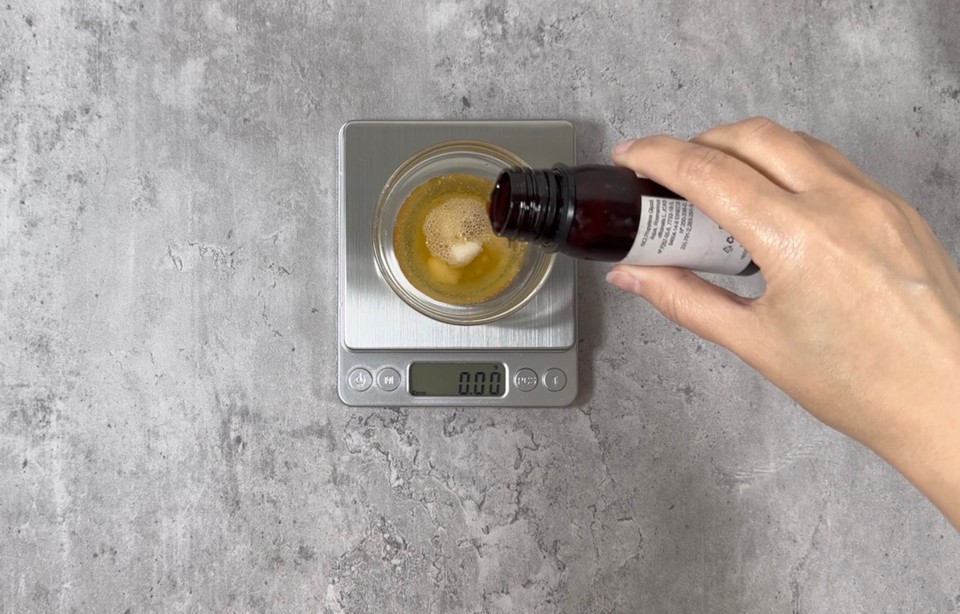
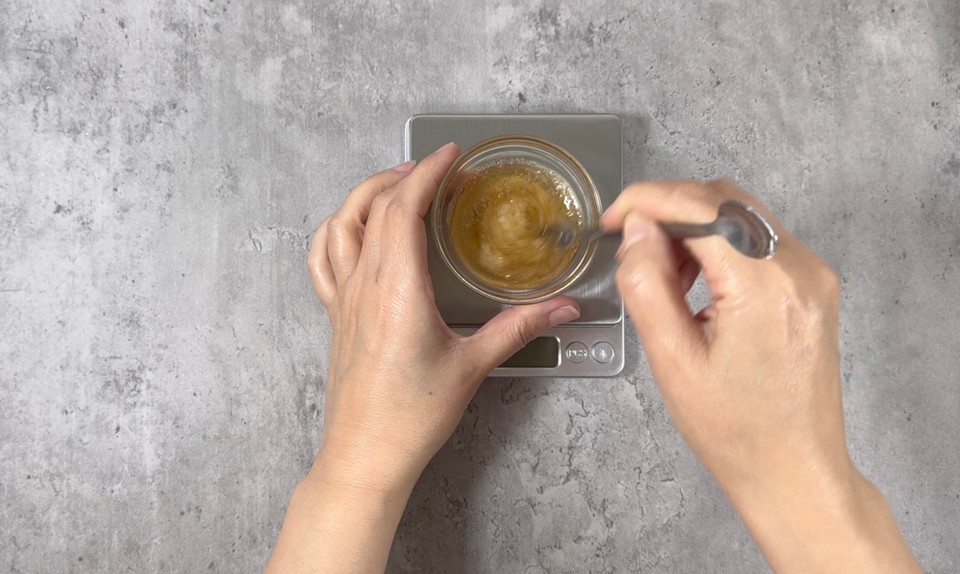
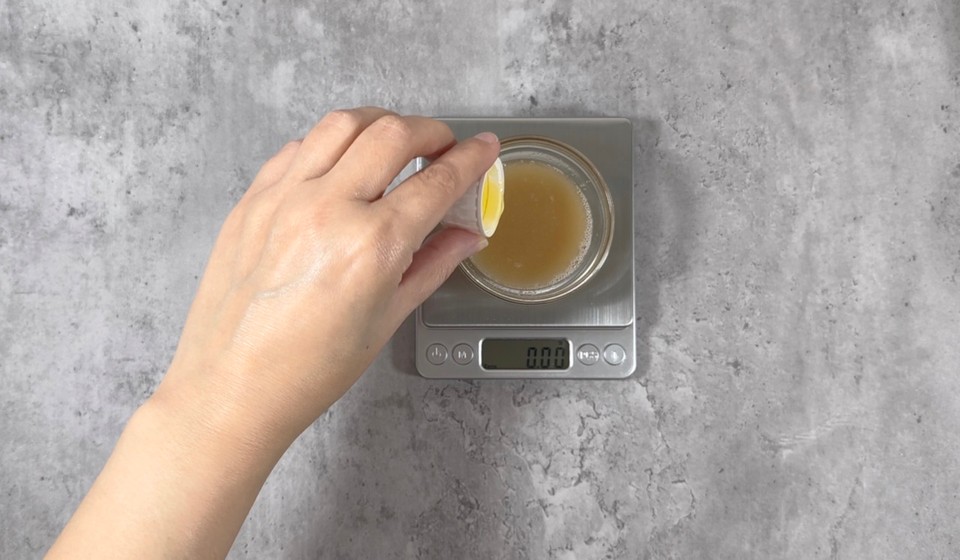
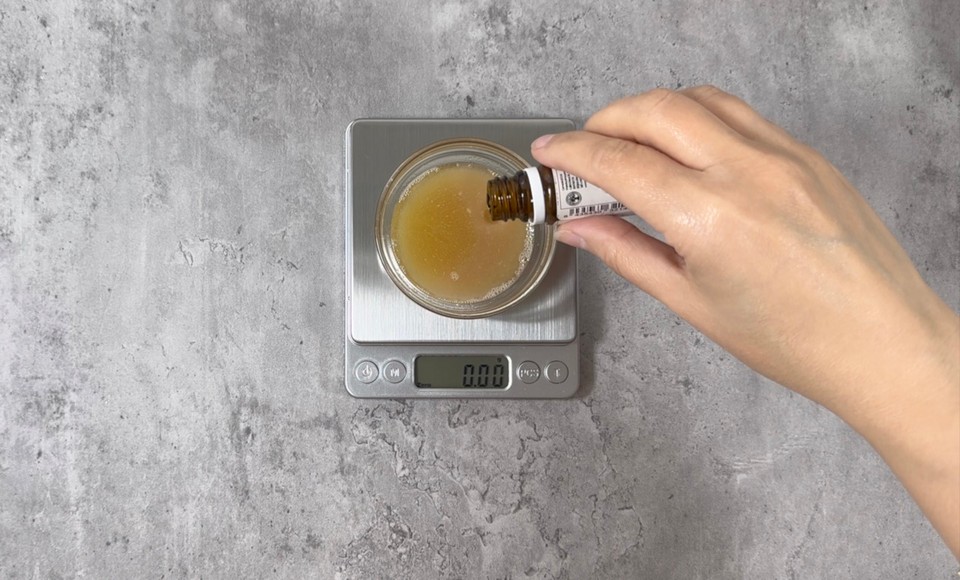
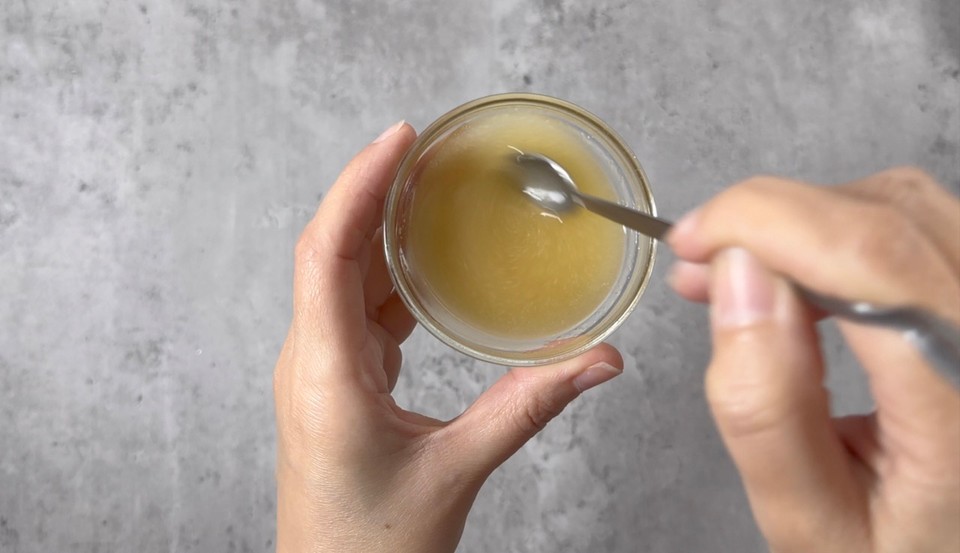
- Remove phases A and B from the heat.


- Combine phases A and B, and use an immersion blender on low speed to emulsify.
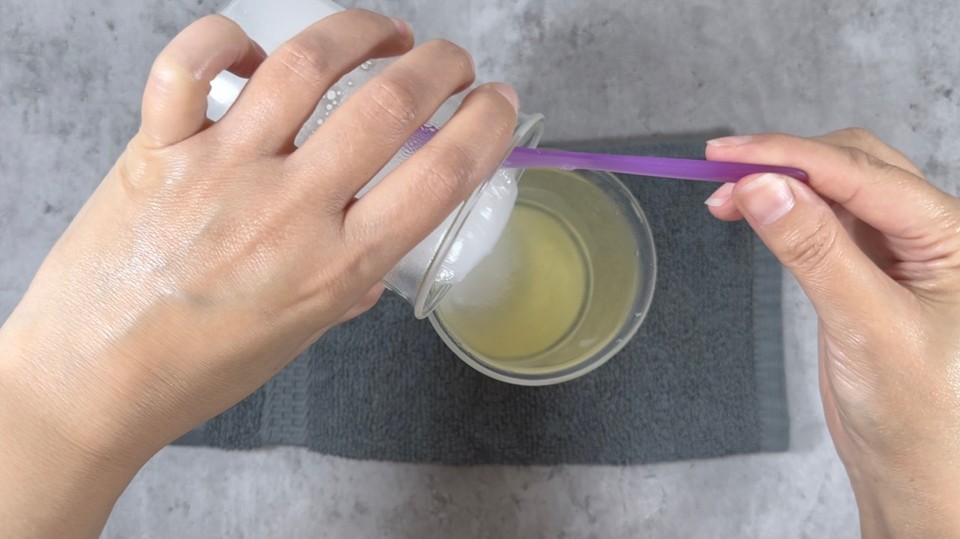
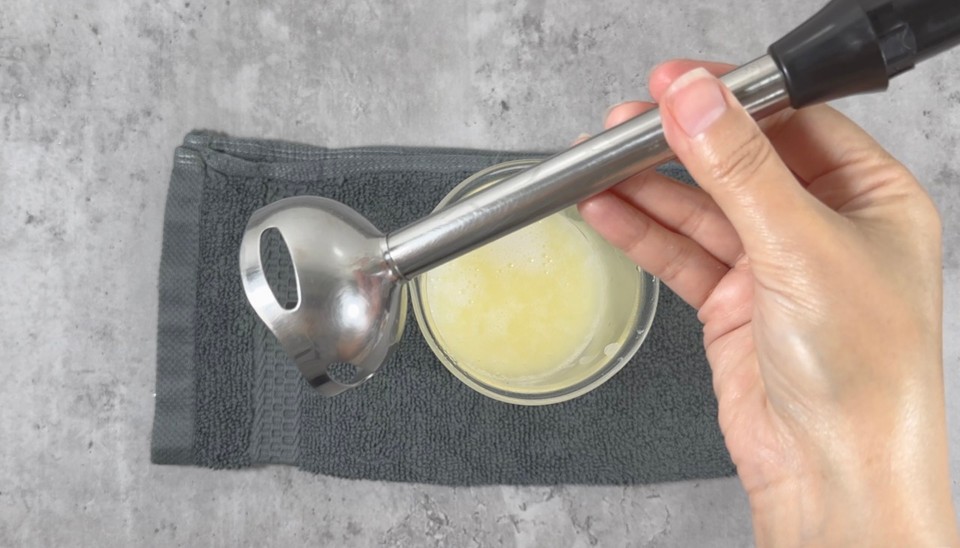
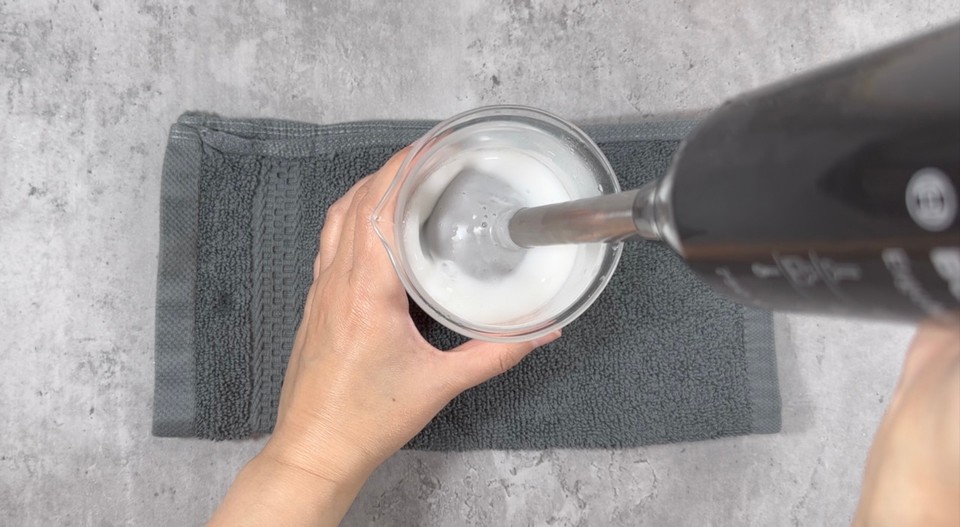
- Let the emulsion cool down to below 40 degrees Celsius.
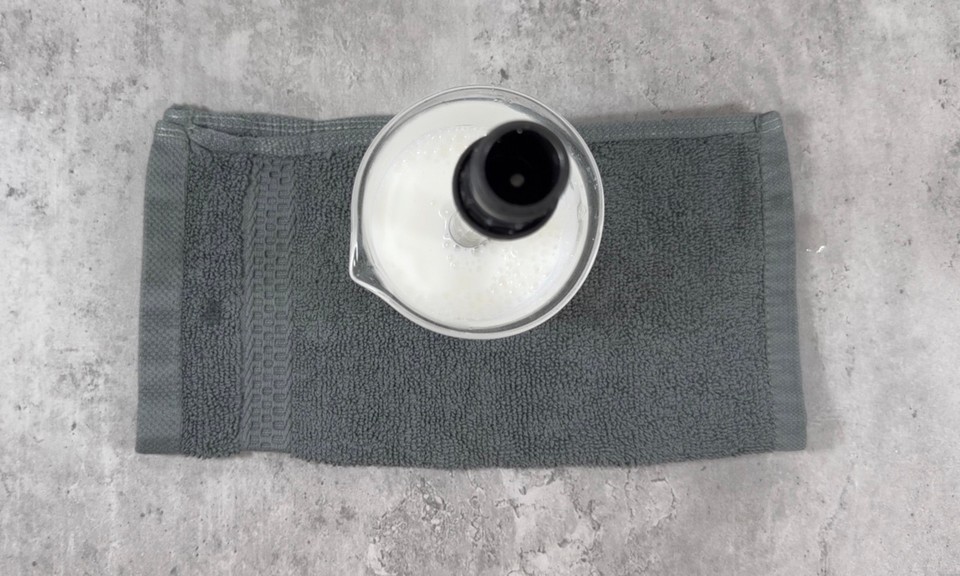
- Add phase C and mix to combine when the emulsion has cooled down to below 40 degrees Celsius.
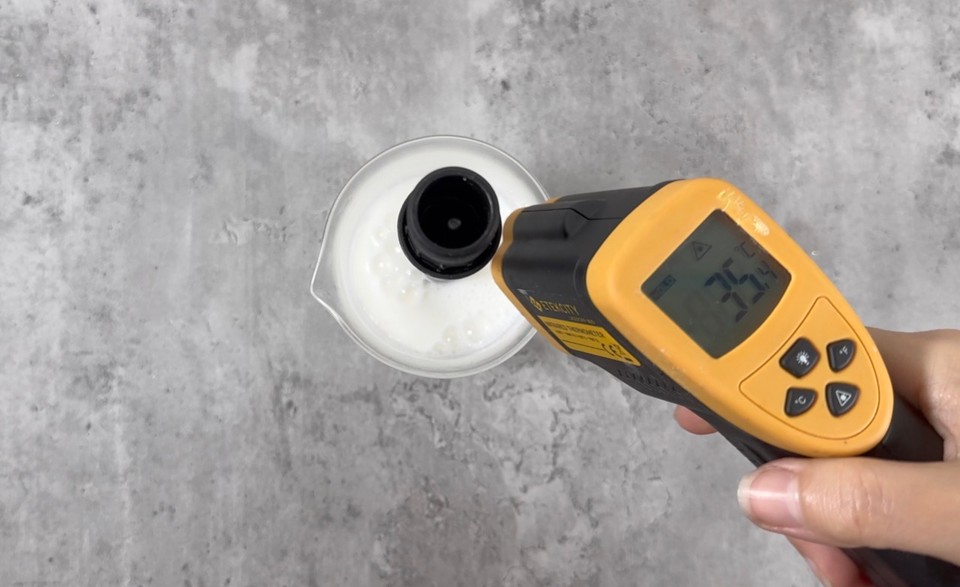

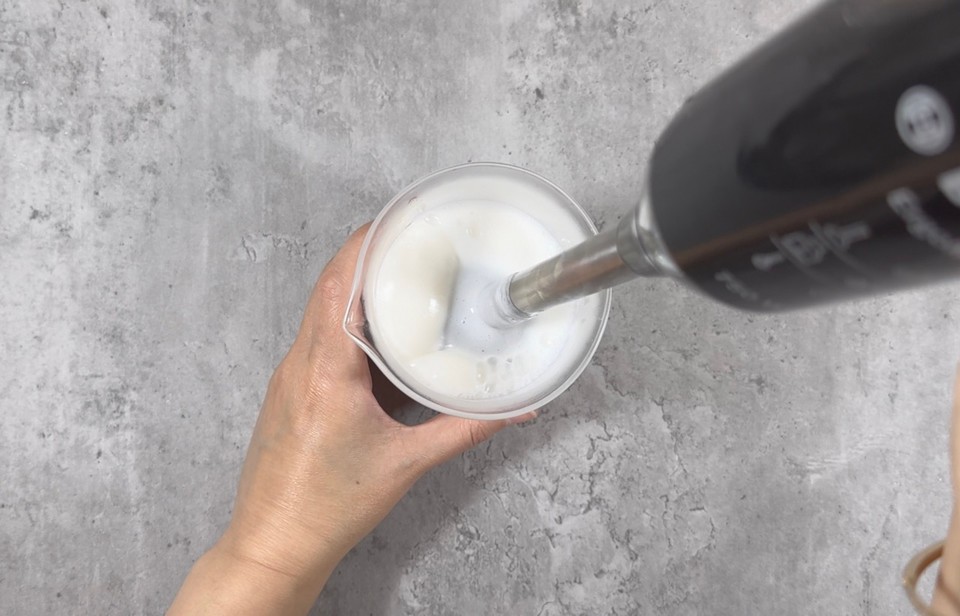
- Check the PH and adjust if necessary. The final PH should be close to 5.5. Check this post regarding PH adjustments.
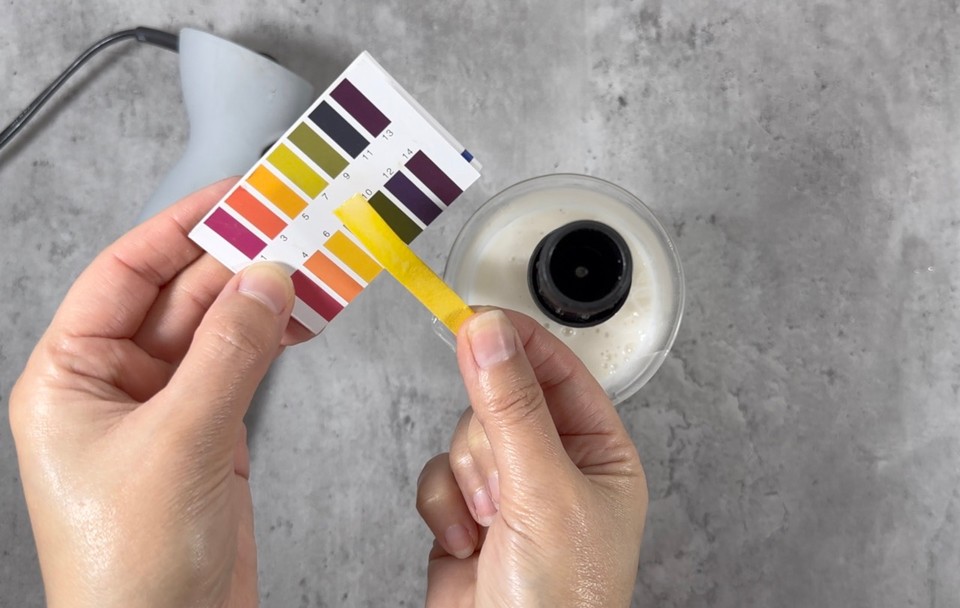
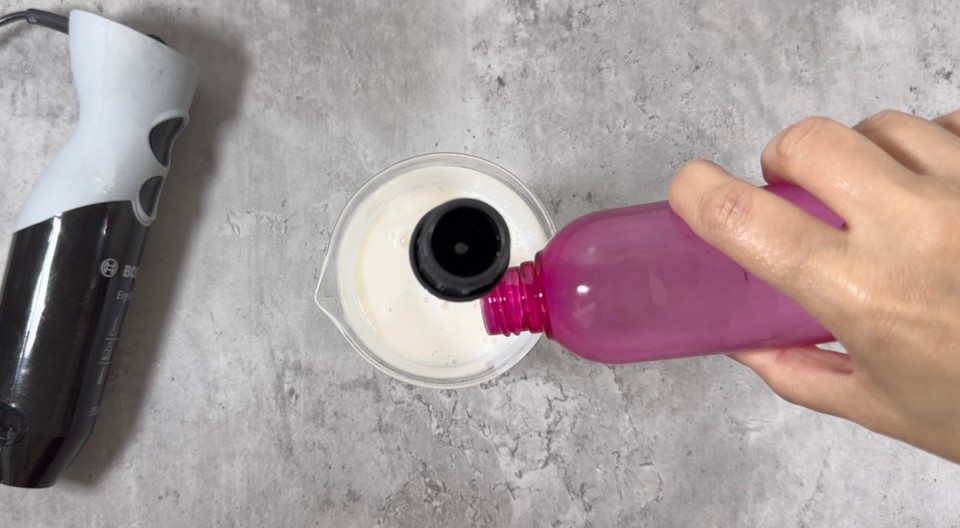
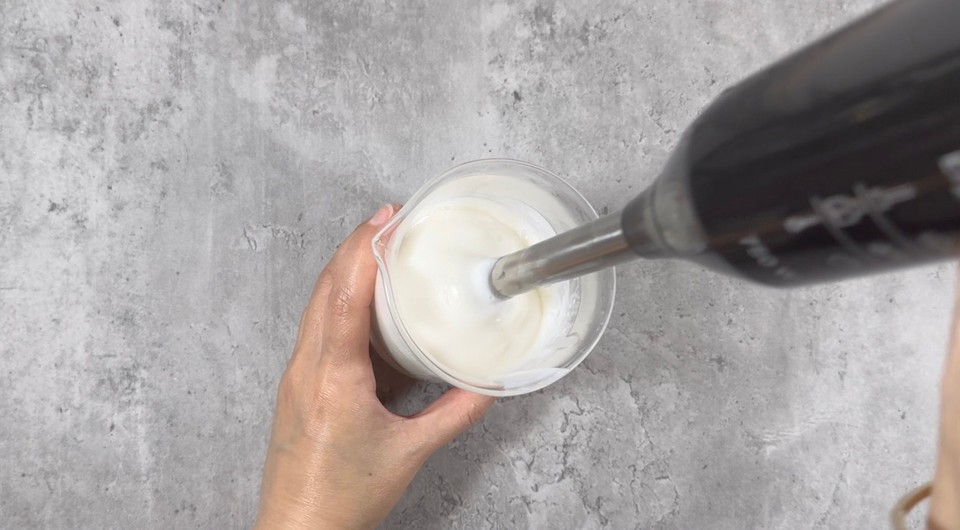
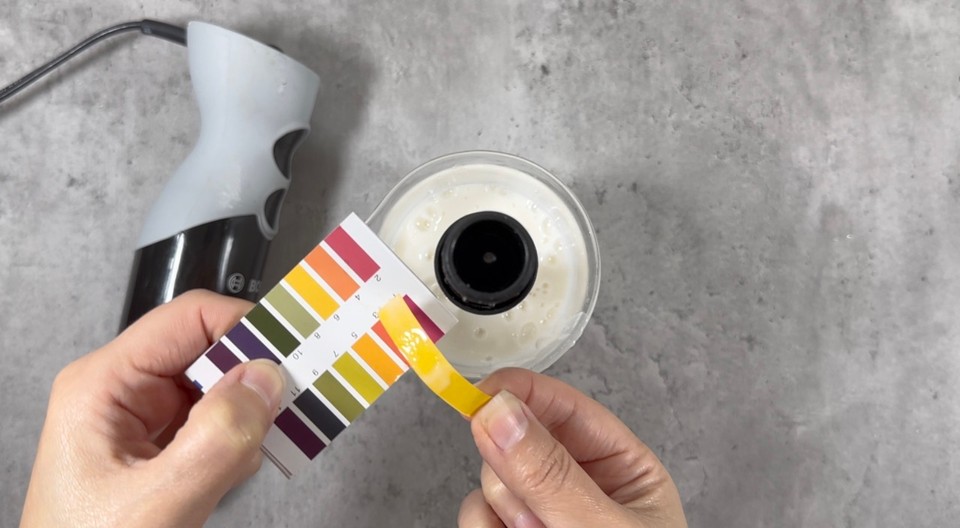
- If you want to add color that is optional, I added a pinch of pink oxide and mixed it.

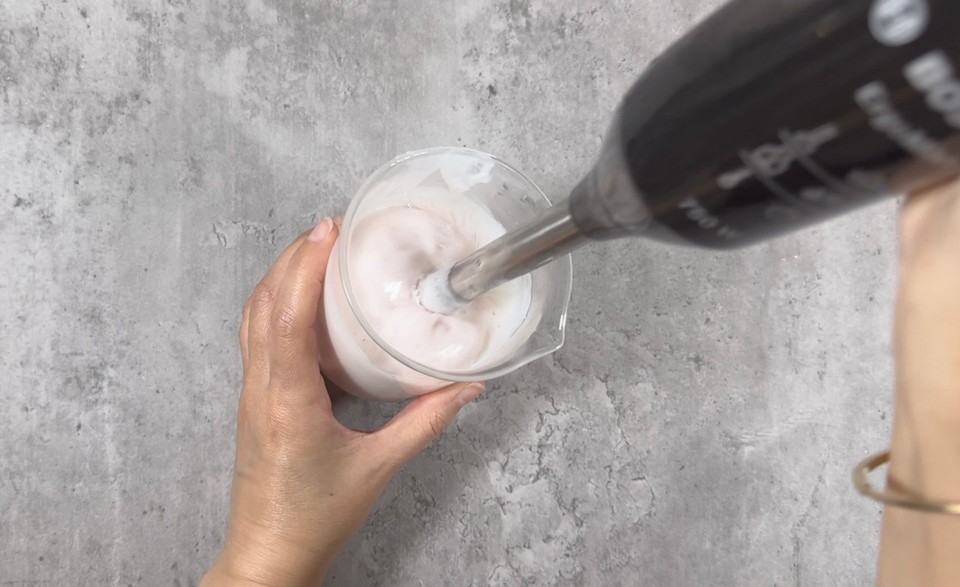
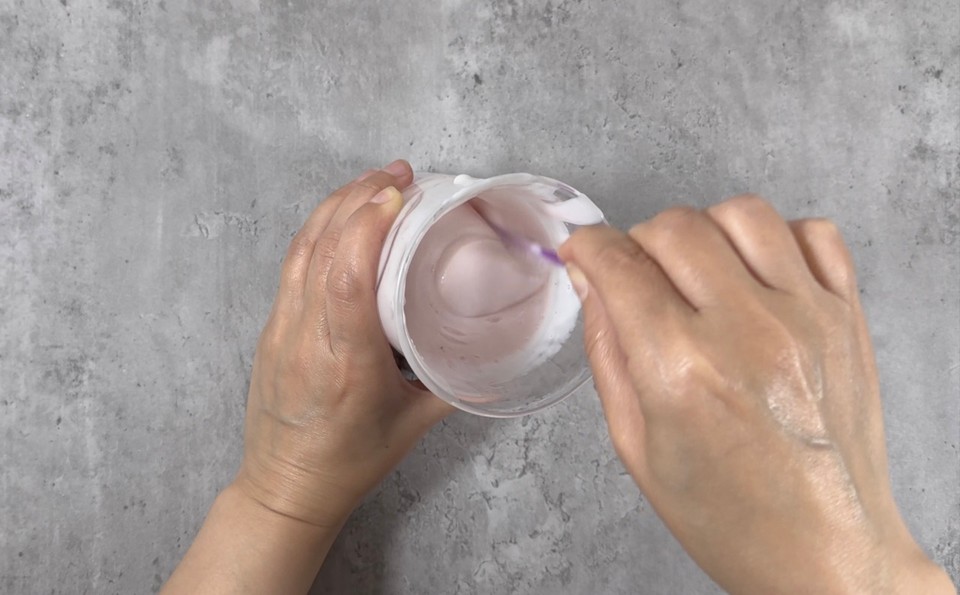
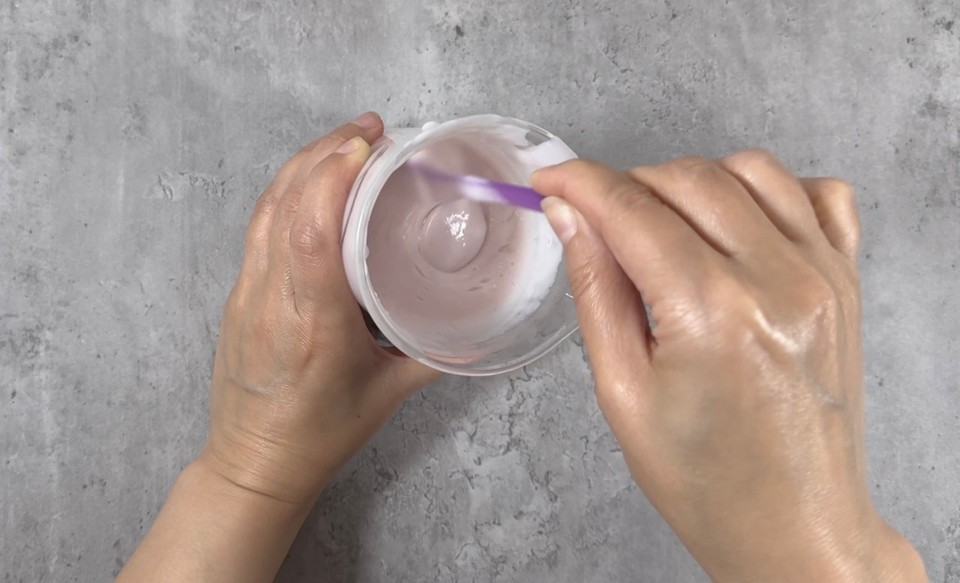
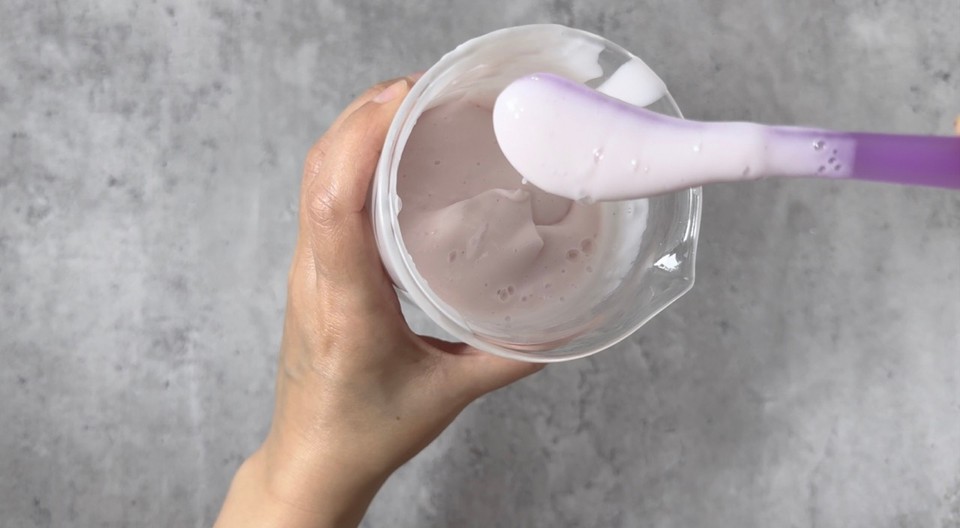
- Cover the beaker and let the emulsion rest for 10-15 hours before pouring it into containers. Since blending creates a lot of foam, we should wait for it to come down.

- Use a pump bottle or a tube container to store the product.
